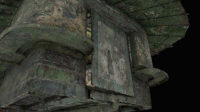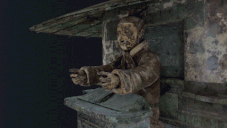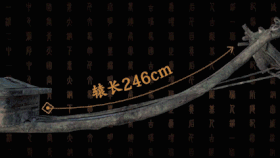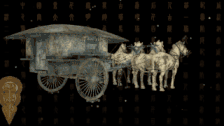You can visit three of the biggest museums in China in one day, touch national treasures with thousands of years’ history, or maybe time travel to Tang Dynasty 1300 years ago, etc. One by one these fantasies are becoming reality with the help of Artificial Intelligence (“AI”). Scientists at the Cultural Heritage Conservation and Inheritance Information Technology Research Center at Tianjin University (“TJU Research Center”) are working on the digital and intelligent display of national treasures and cultural heritage with the help of AI.
In 1980, two 2000-year-old bronze painted horse-drawn chariots were unearthed. They are the largest and most complete bronze chariots and horses discovered so far. The TJU Research Center has cooperated with Emperor Qinshihuang’s Mausoleum Site Museum for 10 years. The application of 3D Laser Measurement technology has enabled the beauty of these bronze painted horse-drawn chariots to appear on the computer screen. We can not only see the pictures, but also drive these chariots in mobile games.

"We are developing a game based on the data collected in Emperor Qinshihuang’s Mausoleum Site Museum. Players can drive the horse-drawn chariots from a subjective perspective." Associate Professor Han Dong stated. This game can provide users with an interactive experience to understand the culture of Qin Dynasty. It can also be set up in the exhibition hall or online in a mobile phone app, and a VR version will also be developed soon.

AI can not only enable "Time Travel" interact with national treasures, but more importantly, it can be applied to the Preventive Treatment of Cultural Heritage’s “diseases”. The TJU Research team has been working on the preventive conservation of cultural heritage by using Computer Visualization, AI and other modern technologies for more than 10 years.

Prof. Zhang Jiawan, Director of the TJU Research Center, has cooperated with the Dunhuang Academy in Gansu Province for many years. He witnessed and monitored the changes on Dunhuang Murals in recent years. After monitoring and analyzing some murals from Dunhuang Mogao Grottoes from 2014 to 2018, the Team first discovered the subtle changes of 0.1 mm in a one-year period.

“By comparing the changes each year, we know how the mural became 'ill', and we know how to prevent these diseases in the future.” Professor Feng Wei at the Research Center said. This Preventive Conservation System for cultural heritage is a magic weapon for researchers to fight against nature and time in order to protect human civilization. At present, this technology has been applied in the Dunhuang Mogao Grottoes, the Summer Palace, the Forbidden City, and other locations. Prof. Zhang Jiawan believes that AI will play an important role in the field of cultural heritage in the future.
By: Li Na; Han Di
Editor: Qin Mian and Keith Harrington






